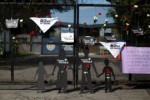The 1950s French horror that inspired Psycho
Seventy years old this year, Henri-Georges Clouzot's film about two women plotting murder is a masterclass in macabre dread – and inspired Hitchcock's classic among others.
Famous for writing the novel Psycho (1959), the basis for the influential 1960 Alfred Hitchcock film of the same name, author Robert Bloch understood the horror genre more than most. So when you read that he called a film his "favourite horror of all time", as he did in an interview with French magazine L'Ecran Fantastique, you have to take that appraisal seriously. The film referred to by Bloch wasn't the adaptation of his own story, nor a Hollywood classic, but instead a quietly influential French feature, 70 years old this year, that packs as much of a macabre punch as his own morbid masterpiece: Henri-Georges Clouzot's Les Diaboliques (1955).
Adapted from the novel She Who Was No More (1952) by French crime-writing partnership Pierre Boileau and Thomas Narcejac (also known as Boileau-Narcejac), Clouzot's film was a revolution in chilling cinema. It mixed techniques from film noir and horror to great effect, creating a hybrid that was deeply influential with its heart-stopping atmosphere of suspense.
Les Diaboliques concerns the tumultuous relationships of several teachers in a private boarding school situated in outer Paris. The weak heart of Christina – played by Clouzot's own wife Véra – is continually strained by the actions of her abusive husband Michel (Paul Meurisse), the school's headmaster, especially since fellow teacher Nicole (Simone Signoret) became his mistress. However, Michel's volatile behaviour is now hurting both women, so they hatch a plan. Though reluctant, Christina is convinced by Nicole to help murder Michel and make it appear accidental. Luring him to Nicole's out-of-town flat, they drown him in a bath and dump the body in the school's swimming pool, ready to be found as if the result of a drunken accident. However, when the body disappears the following day, the women are terrified as to what has happened. Did Michel survive? Or are his haunted remains wandering the school in search of revenge?
Clouzot's work was often laced with cynicism and pessimism. As Susan Hayward suggests in her 2005 book exploring the film, "the thriller is the genre we most readily associate with him. But not just any thriller. His take on the genre is dark, relentless, stifling, cruel". Beginning his career as a screenwriter before switching to directing in the 1940s, Clouzot was a divisive figure in France. His work for the Nazi-controlled and funded Continental Films, run by Goebbels-appointed party member Alfred Greven, during the occupation played a role in his being barred from directing for two years following the end of the war. At this time, his drama Le Corbeau (1943), about a small town whose citizens are beset by poison pen letters, was read as anti-French and collaborationist, which was ironic considering that the Vichy Government had previously pulled the film from cinemas because of its own negative reading of it. Clouzot's pessimism made him adept at making enemies.
Surviving this furore, Clouzot went on to make some of France's most celebrated films, often indebted to the work of Hitchcock, but still uniquely Gallic. Unlike Hitchcock, however, the French critics of the period, many of whom would form the Nouvelle Vague – a radical and inventive group of French film-makers, who sought new ways of film-making while exhibiting a deep knowledge of cinema history – had little time for him or his work due to the somewhat traditional nature of his film-making. He seemed to embody what was known as la tradition de qualité, the pre-Nouvelle Vague style of French cinema which prioritised story over formal innovation. As Hayward writes, "the Nouvelle Vague consigned him thus to the purgatorial ranks of the cinema de papa [dad's cinema], and Clouzot was an auteur no more".
In hindsight, though, films such as Quai des Orfèvres (1947), The Wages of Fear (1953), and, of course, Les Diaboliques, were ahead of their time, representing a new pessimistic variety of thriller that became more commonplace from the 1960s onwards, both in France and internationally. Many thrillers up to this point had rigidly defined concepts of good and evil, while certainly never daring to end on an unhappy note. But Clouzot was at the forefront of a breed of thrillers which refused simplistic notions of morality, and resisted the need for happy, comforting endings. They became less about heroes walking off into the sunset and more about who could escape the least scathed from their........






















 Toi Staff
Toi Staff Belen Fernandez
Belen Fernandez Gideon Levy
Gideon Levy Somdeep Sen
Somdeep Sen Donald Earl Collins
Donald Earl Collins Tarik Cyril Amar
Tarik Cyril Amar Moncef Khane
Moncef Khane Samer Jaber
Samer Jaber Eric Reinhart
Eric Reinhart Marcel Fürstenau
Marcel Fürstenau Yara Hawari
Yara Hawari Rachel Marsden
Rachel Marsden
